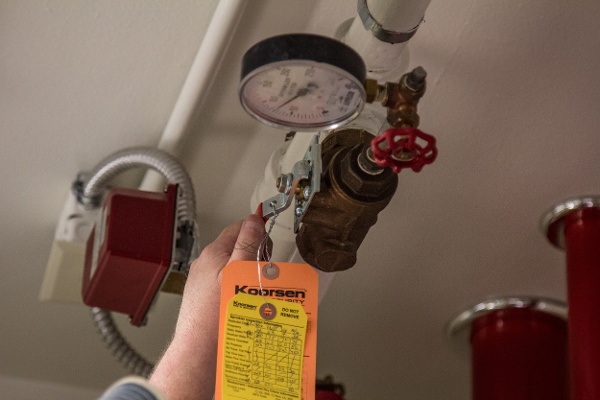
The National Fire Protection Association (NFPA) codes provide standards for businesses to prevent fire risk occurrences, manage the potential impact, and, ultimately, protect employees. We asked Koorsen experts which codes and standards are most often missed or misunderstood to help small businesses understand relevant NFPA codes and be proactive in protecting their business and employees.
Here are their top answers:
NFPA 25: Standard for the Inspection, Testing, and Maintenance of Water-based Fire Protection Systems
NFPA 25 addresses the periodic inspection, testing, and maintenance of water-based fire protection systems. NFPA 25 is most often missed due to lack of enforcement. This general complacency allows businesses to think they won’t be held accountable if they forgo the inspections until caught or cited; however, compliance maximizes the system’s integrity to avoid failure and ensure a fast, effective response in a fire emergency.
NFPA 72: National Fire Alarm and Signaling Code
NFPA 72 addresses the application, installation, location, performance, inspection, testing, and maintenance of fire alarm systems, public emergency reporting systems, fire warning equipment, and emergency communications systems. Zornes lists several ways companies commonly fail NFPA 72:
- A/V testing in sleeping areas (hotel, dorms, etc.)
- Verifying proper pressure on sprinkler risers
- Testing cross-connections between systems
- Changing phone line providers to a cable bundle package or VOIP
- Adding access control and not notifying the fire alarm provider
NFPA 101: Life Safety Code (7.9.3 and 7.10.9)
This code addresses the maintenance and testing of exit and emergency lights, requiring the following:
- A visual inspection of the equipment (lighting fixtures) once every 30 days
- Thirty second illumination test under backup power (battery, generator, etc.) performed every 30 days
- Ninety minute illumination test under backup power performed once a year
- Written records of visual inspections and all tests to be kept for inspection by the authority having jurisdiction
Billy Findley, Koorsen VP of General Products, says, “Most businesses as well as fire inspectors think that pressing the test button on a light and having it illuminate for a couple of seconds is enough to show they are working properly.”
The true measure of these lights working properly is for them to stay illuminated for a full 90 minutes without AC power. Pushing the test button and thereby illuminating the lights just lets you know that the backup batteries have enough power to light up the bulbs at that time. Often, when a 90-minute test is performed, the lights will illuminate for 10 or 20 minutes, but the batteries do not have the capacity to last for the full 90-minute requirement.
Ultimately, Findley says, “The regulation doesn’t always seem to be missed, but it is frequently misunderstood.” People (customers and AHJs) seem to think that as long as the lights illuminate when the test button is pressed, their lights are OK. The truth is that no one has any idea how long these lights would last in the case of a real emergency. Yes, they lit up when the button was pushed, but will they still be on in 60 minutes or even 5? These lights could be essential in an emergency. Even if you have worked in the same building for 15 years, trying to find your way out of it when it is pitch-black could be a challenge (not to mention an even bigger challenge for visitors to the building).
The purpose of exit and emergency lights is to lead people to an exit of a facility, even if the power to the building has been shut down. Many of these lights have rechargeable backup batteries that take over as a power source when the normal AC power to the building does not work. Findley says, “We usually tell our customers that since there is a requirement for a 30 second test every 30 days, they can do this themselves.” This monthly battery test will actually help the batteries last longer. There are some other factors that can affect the life span of a battery in one of these fixtures. One of the biggest things to consider is the temperature of the environment the batteries are in. The higher the temperature, the shorter the battery life.
For more information regarding NFPA codes, talk to a Koorsen Fire & Security expert about being proactive in protecting your business.

